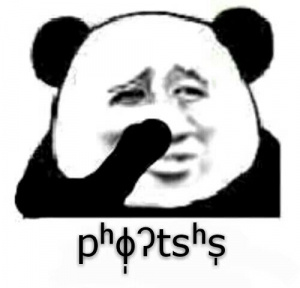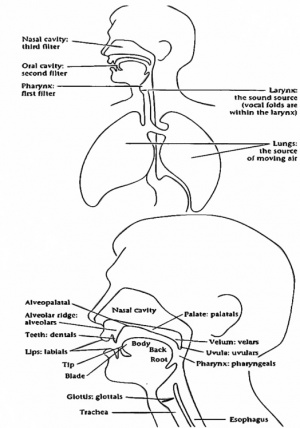Difference between revisions of "Language/Multiple-languages/Pronunciation/International-Phonetic-Alphabet"
| Line 19: | Line 19: | ||
A2. Because it's the rough shape of an oral cavity facing the left. It's vivid to show tongue positions. | A2. Because it's the rough shape of an oral cavity facing the left. It's vivid to show tongue positions. | ||
=== Q3. Are | === Q3. Are phonemes in “phonemic symbols for English” identical with their correspondents in IPA? === | ||
A3. Mostly NOT! Even for phonemes represented in the same symbol, there are still subtle differences, and so do phonemic symbols for other languages. If you are not going to study linguistics, it's right here to halt further asking. One of course may have its own accent, anyway if people accept it, that's enough, for a common polyglot. | A3. Mostly NOT! Even for phonemes represented in the same symbol, there are still subtle differences, and so do phonemic symbols for other languages. If you are not going to study linguistics, it's right here to halt further asking. One of course may have its own accent, anyway if people accept it, that's enough, for a common polyglot. | ||
Revision as of 07:13, 30 December 2018
When I learn a language, the books always show a similar phoneme in the learner's known language to tell how to pronounce a phoneme. But that's really not an appropriate method for a language enthusiast, because that is the reason why people pronounce in the target language like in their native language. So it's necessary to learn IPA.
Official website
https://www.internationalphoneticassociation.org/
Memrise Course
https://www.memrise.com/course/200311/ipa-symbols/
FAQ
Q1. What's the difference between voiceless and voiced?
A1. The difference between voiceless and voiced is whether the vocal cord vibrates or not when pronouncing the consonant. It's hard to distinguish for a beginner.
Q2. Why is the vowel chart shown in trapezoidal shape?
A2. Because it's the rough shape of an oral cavity facing the left. It's vivid to show tongue positions.
Q3. Are phonemes in “phonemic symbols for English” identical with their correspondents in IPA?
A3. Mostly NOT! Even for phonemes represented in the same symbol, there are still subtle differences, and so do phonemic symbols for other languages. If you are not going to study linguistics, it's right here to halt further asking. One of course may have its own accent, anyway if people accept it, that's enough, for a common polyglot.
Q4. How to pronounce trills (e.g. rolling R)?
A4. It requires patience if none of them are in your mother tongue. Just practise, no other way. If you can pronounce a type of trill, you can pronounce another type easier. If you can't succeed anyway, you may consider visiting an oral surgeon.
Guidance:


